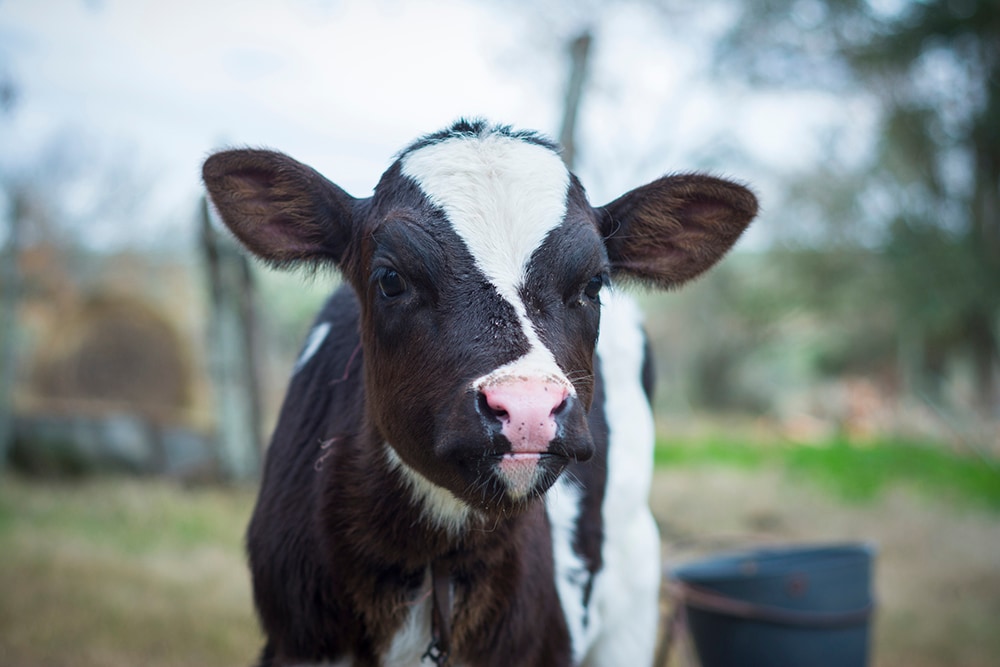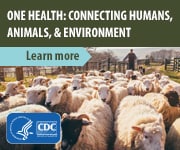Farm Animals
Find information about poultry (chickens, turkeys, etc.) on the backyard poultry page.
Find information on horses on the horses page.
Interacting with farm animals or livestock like cattle, sheep, pigs, goats, llamas, and alpacas can provide education, entertainment, and in many cases a livelihood. Many people will only see farm animals at petting zoos or on farm visits. For others, work with farm animals is a career, lifestyle, or tradition. Some types of farm animals, like goats and pigs, are increasingly being treated like pets or used in settings outside the farm (for example, goat yoga); however, it’s important to remember that these animals are livestock and are not meant to live inside the home or be kept indoors, which increases the risk of illness in people.
Although there are many benefits to interacting with farm animals, it’s important to be aware that farm animals can sometimes carry harmful germs that can cause a variety of illnesses in people, ranging from minor skin infections to serious illnesses. One of the best ways to protect yourself from getting sick is to thoroughly wash your hands right after handling farm animals, their supplies, or anything in the areas where they live and roam.
By providing your farm animals with routine veterinary care and following the Healthy People tips, you are less likely to get sick from touching, owning, visiting, or working with farm animals.
Read below about diseases that can be spread by farm animals. Visit the Healthy People section to learn about staying healthy around farm animals.
Anthrax is a naturally occurring disease of animals caused by bacteria found in the environment. Although it is rare in the United States, people can get sick with anthrax if they come in contact with infected animals, including farm animals. People who live in areas where anthrax has occurred should consider vaccinating their livestock against the disease every year.
How it spreads: Farm animals can become infected with anthrax when they ingest spores in contaminated soil, plants, or water. People get infected by having contact with sick or dead animals or eating meat contaminated with spores. People can also get anthrax through a cut or scrape in the skin. Anthrax is not contagious, which means it is not spread from person to person.
Who is at risk: Anthrax is rare in the United States, but anyone who comes in contact with anthrax spores can get sick. People at higher risk for anthrax include veterinarians, livestock producers, laboratory professionals, and people who handle animal products (for example, hides, wool, or hair).
Signs in farm animals: Animals do not always appear sick, but if they do, they can get sick suddenly and die quickly. Clinical signs vary by animal species. Typical signs include fever, staggering, depression, difficulty breathing, or seizures. Often, infected animals do not show signs of illness and are found dead before the cause is known.
Symptoms in people: The symptoms of anthrax in people depend on the type of infection and can take anywhere from 1 day to more than 2 months to appear.
- Cutaneous (skin) anthrax: A group of small blisters or bumps, a painless skin sore (ulcer) with a black center (scar) appearing after the small blisters, and swelling.
- Inhalation anthrax (from breathing in spores): Fever and chills, shortness of breath and chest discomfort, confusion, nausea or vomiting, headache, sweats, extreme tiredness, and body aches. This type of anthrax is very rare and mostly associated with an intentional spore release (bioterrorism).
- Ingestion (stomach & intestines) anthrax: Fever and chills, swelling of neck or neck glands, sore throat, painful swallowing, diarrhea or bloody diarrhea, red face and eyes, and stomach pain.
All types of anthrax have the potential, if untreated, to spread throughout the body and cause severe illness and even death.
Bovine tuberculosis (TB) is a type of TB caused by Mycobacterium bovis (M. bovis) bacteria, which are different than the bacteria that cause most tuberculosis cases in people. M. bovis bacteria are most commonly found in cattle, although the United States has made progress toward eliminating M. bovis from the cattle population. M. bovis can also be found in other animals such as bison, elk, and deer. People can also get infected with M. bovis bacteria.
How it spreads: People can get bovine TB by eating undercooked meat or raw (unpasteurized) dairy products or by breathing in the bacteria. The bacteria also can enter the body through cuts or scrapes during slaughter or hunting. M. bovis bacteria can spread between livestock and wild animals, so it is important to keep your livestock separated from wild animals when possible.
Who is at risk: Anyone can get bovine TB, but people who work with cattle, bison, deer, or elk or their products (such as through ranching, farming, butchering, or hunting) are at higher risk for exposure to M. bovis bacteria. If you are concerned about M. bovis in wildlife in your community, contact your state department of natural resources for more information. People can also be infected with M. bovis from consuming unpasteurized (raw) dairy products like milk or cheese, especially in countries where dairy industries are less regulated.
Signs in wildlife: Animals typically don’t show signs of bovine TB until later stages of disease. These signs can include weight loss, fatigue, and moist cough.
Symptoms in people: Signs and symptoms of bovine TB in people depend on how a person is infected. Infected people might have sores, swollen lymph nodes, difficulty breathing, weight loss, night sweats, fever, or intestinal discomfort. Some people don’t show signs of disease. People can live with M. bovis infection for many years before developing TB disease symptoms – this is a condition called latent TB infection. If you think you might have been exposed to M. bovis, ask your healthcare provider about being tested for latent TB infection.
Brucellosis is a bacterial disease caused by contact with infected animals and contaminated animal products like raw (unpasteurized) dairy products like milk or cheese.
How it spreads: The most common way people get brucellosis is by eating or drinking raw dairy products. People can also get brucellosis by coming in contact with infected animals or contaminated animal tissues or fluids (such as blood) and/or getting the bacteria in skin wounds or mucus membranes.
Who is at risk: Anyone can get brucellosis, but people who consume raw dairy products or work closely with animals may be more at risk.
Signs in farm animals: Farm animals most commonly infected include sheep, cattle, goats, and pigs, and less commonly horses. Most animals infected with brucellosis show no signs of illness. For animals that do show signs of illness, symptoms vary by animal species and can include infection of reproductive organs, abortions, and stillborn or weak calves.
Symptoms in people: People with brucellosis usually become sick within 2-4 weeks of exposure, but symptom onset can begin anywhere between 5 days to 6 months after exposure. Sick people have flu-like symptoms. Sometimes brucellosis can become a chronic illness that can be difficult to treat and potentially lead to more severe health consequences. Occasionally, brucellosis can affect reproductive organs and cause miscarriage.
Campylobacter are bacteria that can make people and animals sick with a disease called campylobacteriosis.
How it spreads: Campylobacter most often spread to animals and people through the feces (poop) of infected animals, contaminated food, or the environment. Many types of farm animals, including those found at zoos, petting zoos, and fairs, can carry Campylobacter and other germs that make people sick. People can get infected if they don’t wash their hands after touching an animal or its poop, food, toys, habitats (including barns, pens, and cages) or equipment used around these animals (such as halters, chutes, and trailers).
Who is at risk: Anyone can get a Campylobacter infection, but children younger than age 5, adults aged 65 and older, and people with weakened immune systems are more at risk for serious illness.
Signs in farm animals: Farm animals infected with Campylobacter usually show no signs of illness, but if they do, they might experience diarrhea.
Symptoms in people: People can have diarrhea (often bloody), fever, and abdominal cramps. The diarrhea may be accompanied by nausea and vomiting. Symptoms usually start within 2–5 days after infection and last about 1 week.
Dermatophilosis is a skin disease caused by bacteria that can affect people and animals. Dermatophilosis mainly affects deer, but also can affect cattle, sheep, horses, and goats. This infection is more common in moist or humid environments.
How it spreads: The bacteria spread through contact with an infected animal, contact with contaminated surfaces, and bites from fleas and ticks. The bacteria can spread to people through direct contact with an infected animal.
Who is at risk: People who handle animals, especially deer, are at higher risk for getting dermatophilosis. People with weakened immune systems are more likely to get severe illness.
Signs in wildlife: Infected animals might have matted hair, scabs, crusts, and areas of hair loss. Although some animals with severe infections may become emaciated and die, most infections are mild and will heal with time.
Symptoms in people: Infected people might have sores on the hands and arms.
Orf virus causes infections in sheep and goats and can also spread to people. In animals, Orf virus infection may be called sore mouth, scabby mouth, or contagious echyma. Goats are typically more severely affected than sheep.
How it spreads: Animals spread Orf virus to each other through cuts or abrasions in the skin, typically during suckling. People get infected after touching an animal’s sores or any piece of equipment, such as a harness, that has touched an infected animal’s sores. Activities such as bottle or tube feeding, shearing animals, or petting animals can cause infection. Animal bites can also cause infection.
Who is at risk: Anyone can get infected with Orf virus, but people with weakened immune systems are at risk for developing more serious illness.
Signs in farm animals: Animals with Orf virus infection usually develop sores on the lips, muzzle, and in the mouth. Sheep and goats may also get sores on their lower legs and udder when infected lambs or kids (baby goats) nurse. Most animals recover completely from Orf virus infection.
Symptoms in people: People infected with Orf virus usually get sores on the top layer of the skin, typically on the fingers, hands, or forearms. These sores may be painful and last up to 2 months. Other symptoms can include mild fever, fatigue, or swelling of lymph nodes. Sores caused by Orf virus usually heal without scarring.
Cryptosporidiosis is a parasitic disease caused by the germ Cryptosporidium (or Crypto for short), which is spread by swallowing poop from an infected person or animal. The risk is greatest from contact with young calves, especially calves with diarrhea.
How it spreads: Crypto spreads through swallowing poop containing the germ after contact with an infected person or animal, or through contaminated food or water.
Who is at risk: Anyone can been infected with Crypto, but people with weakened immune systems are more at risk, especially for severe disease.
Signs in farm animals: Farm animals, especially pre-weaned calves, can carry Crypto without any signs, but they may have mild diarrhea.
Symptoms in people: Symptoms include profuse, watery diarrhea with cramping, abdominal pain, vomiting, and nausea. The symptoms typically resolve within 1–2 weeks.
E. coli are bacteria found in the environment, foods, and intestines of people and animals. Although most kinds of E. coli are harmless, others can make people – and newborn farm animals – sick.
How it spreads: E. coli most often spreads to animals and people through the poop of infected animals, contaminated food, or the environment. Many types of healthy farm animals, including those found at zoos, petting zoos, and fairs, can carry E. coli and other germs that make people sick. People can get infected if they don’t wash their hands after touching an animal or its poop, food, toys, habitats (including barns, pens, and cages) or equipment used around these animals (such as halters, chutes, and trailers).
Who is at risk: Anyone can get sick from E. coli, but children under 5 years old, adults 65 and older, and people with weakened immune systems are more likely to have serious illness. Newborn farm animals are at risk for E. coli infection, especially pigs, lambs, and calves.
Signs in farm animals: Healthy farm animals, especially calves and cows, sheep, and goats, can carry some types of E. coli that can make people sick. Newborn farm animals may experience diarrhea from Enterotoxigenic E.coli; however, the strains of this type of E. coli that make animals sick have not been found to make people sick.
Symptoms in people: Symptoms depend on the kind of E. coli causing the infection. Symptoms of a Shiga toxin-producing E. coli (STEC) infection, one of the most commonly diagnosed E. coli infections in the United States, include stomach cramps (that can be severe) and diarrhea (that can be bloody) and sometimes vomiting or a low fever. Symptoms usually start within 3–4 days after infection and last 5–7 days. Some people with STEC infection develop a life-threatening complication called hemolytic uremic syndrome (HUS), a type of kidney failure.
Influenza, or “flu”, is a contagious respiratory illness caused by influenza viruses. Some influenza viruses that primarily circulate in animals have on rare occasion infected people. For example, some avian influenza (bird flu) viruses as well some swine influenza viruses can cause infections in people. When influenza viruses that normally circulate in animals cause an infection in people, this is called a “novel” virus infection. Not all influenza viruses found in birds or pigs are known to cause human infections.
How it spreads: Flu viruses are highly contagious. Most experts think that flu viruses spread mainly by droplets made when people with the flu cough, sneeze, or talk. These droplets can land in the mouths or noses of people who are nearby or possibly be inhaled into the lungs. People can also spread flu to each other. Avian [PDF – 2 pages] and swine [PDF – 2 pages] flu can spread to people through contact with the virus from saliva, nasal secretions, or poop from infected animals. A person can also get flu through contact with virus-contaminated surfaces, poultry coops, pig pens, and supplies. Less often, flu can also spread to people through touching infected animals and then touching your eyes, nose or mouth.
Who is at risk: It is rare for avian or swine flu to spread to people. Anyone can get the flu, but children younger than 5 years old, pregnant women, people 65 and older, and people with weakened immune systems are at high risk for serious flu complications. People who work closely with large numbers of birds and pigs, such as poultry or pig producers, are at risk of infection if their animals are infected. Anyone at high risk of serious flu complications planning to attend an agricultural fair or farm where swine are present should avoid close contact with the pigs and swine barns, including pig exhibitors and family members with high risk factors.
Signs in farm animals: Both birds and pigs can be infected with flu viruses without showing symptoms. If they do get sick, poultry flocks can experience a range of illness, from decreased egg production to extremely high death rates. Symptoms in pigs can include fever, depression, coughing, discharge from the nose or eyes, sneezing, breathing difficulties, eye redness or inflammation, and lack of appetite.
Symptoms in people: With both avian and swine flu, infected people can have symptoms similar to the human seasonal flu, such as fever, fatigue, lack of appetite, and coughing. They may also have red eyes, nausea, abdominal pain, diarrhea, and vomiting. In some people, serious complications from flu can occur, such as inflammation of the heart (myocarditis), brain (encephalitis) or muscle (myositis, rhabdomyolysis) tissues, and multi-organ failure (for example, respiratory and kidney failure).
Leptospirosis is a bacterial disease that can affect people and animals. Many kinds of animals can carry the bacteria in their urine, including farm animals. Cows, pigs, and horses can be vaccinated to protect against certain strains of leptospirosis.
How it spreads: The bacteria that cause leptospirosis spread through the urine of infected animals, which can get into water or soil and survive there for weeks to months. People get infected through contact with urine or other body fluids (except saliva) from infected animals, or through contact with water, soil, or other materials (such as animal bedding) contaminated with urine from infected animals.
Who is at risk: Leptospirosis occurs worldwide, but is most common in tropical and subtropical climates. It has been associated with contact with infected animals and activities in contaminated lakes and rivers, such as swimming, wading, kayaking, and rafting. It is also a risk for people in certain jobs that involve contact with animals or their waste, like farmers, sewer workers, slaughterhouse workers, and veterinarians. People working directly with farm animals or cleaning up after them (such as cleaning barns, stables, or stalls) may be at risk for leptospirosis.
Signs in farm animals: Leptospirosis can infect a wide range of animal species, including cows, pigs, sheep, goats, and horses. Many animals infected may not show any signs of illness. For animals that do show symptoms, they can vary greatly and include fever, kidney and liver failure, and spontaneous abortions or stillbirths.
Symptoms in people: People with leptospirosis might not have any symptoms, but those who do will usually become sick within 2 days to 4 weeks of exposure and can have high fever, headache, chills, muscle aches, vomiting, jaundice, red eyes, abdominal pain, diarrhea, and rash. A small number of people with leptospirosis can have more severe disease, such as liver and kidney failure, hemorrhagic pneumonia, and even death. Early treatment with antibiotics is important, and can reduce the duration and severity of illness.
Listeria monocytogenes are bacteria that cause people and animals sick with a disease called listeriosis.
How it spreads: Listeria most often spreads to people and animals through contaminated food, soil, or water. Some people have become infected after contact with an infected animal or its tissues, but most are infected by eating contaminated food.
Who is at risk: Listeria is most likely to sicken pregnant women and their newborns, adults 65 and older, and people with weakened immune systems. Other people can be infected with Listeria, but they rarely become seriously ill. When infection occurs during pregnancy, it can cause miscarriage, stillbirth, premature delivery, or newborn death. Learn which foods are more likely to contain Listeria and how people at risk for more serious disease can protect themselves.
Farm animals at risk for Listeria infection include sheep, cattle, goats, and occasionally pigs.
Signs in farm animals: Animals infected with Listeria can have a variety of signs, including drooping ears or lips that hang open. Animals sometimes become disoriented and press themselves into corners. Listeria infection can also cause reproductive problems, including abortions, and can lead to death of the infected animal.
Symptoms in people: People may experience a variety of symptoms, depending on the person and the part of the body affected.
- Pregnant women: Pregnant women typically experience only fever and other flu-like symptoms, such as fatigue and muscle aches. However, infection during pregnancy can lead to miscarriage, stillbirth, premature delivery, or life-threatening infection of the newborn.
- People other than pregnant women: Symptoms can include headache, stiff neck, confusion, loss of balance, and convulsions in addition to fever and muscle aches.
Staphylococcus aureus is a common type of a bacteria normally found on the skin of people and animals. MRSA is Staphylococcus aureus bacteria that have become resistant to some antibiotics. MRSA can cause a variety of infections, including skin infections, pneumonia (lung infection), and other problems.
How it spreads: MRSA can sometimes spread between people and animals through direct contact (touching). Even animals that aren’t sick can carry MRSA and spread it to people.
Who is at risk: Anyone can get an MRSA infection.
Signs in farm animals: Farm animals like cows and pigs often don’t show signs of having MRSA, but they can experience skin infections.
Symptoms in people: Most people with MRSA will carry it without symptoms. For people who develop a MRSA infection, the most common type is a skin infection. If left untreated, MRSA can rarely spread to the lungs or bloodstream and become life-threatening.
Q fever is a disease caused by Coxiella burnetii bacteria. The bacteria naturally infect some animals, including goats, sheep, and cattle.
How it spreads: People can get Q fever by breathing in dust that has been contaminated by infected animal feces, urine, milk, or birth products (such as placenta and amniotic fluid) that contain C. burnetii bacteria. A person does not need to have direct contact with an animal to get infected. Wind can carry barnyard dust mixed with Q fever bacteria for miles. People can also get Q fever by eating or drinking contaminated unpasteurized (raw) dairy products.
Who is at risk: People who work closely with farm animals are most at risk for Q fever. Contact with sheep and goats around the time they give birth creates the greatest risk for people to become infected. Pregnant women should take extra precautions to avoid infection since infection during pregnancy could cause miscarriage, stillbirth, or pre-term delivery.
Signs in farm animals: Most animals infected with C. burnetii do not have symptoms. However, infected animals may lose weight or have reproductive issues, including spontaneous abortion.
Symptoms in people: Symptoms of acute Q fever usually develop 2-3 weeks after exposure and can include fever, chills or sweats, tiredness, muscle aches, nausea, diarrhea, and chest pain. Rarely (in less than 5 out of 100 people), infection may lead to chronic illness. Chronic Q fever is more likely to occur in people with heart valve disease, blood vessel abnormalities, or in people with weakened immune systems. Women infected during pregnancy may also be at risk for developing chronic Q fever.
Rabies is a deadly neurologic disease caused by a virus that spreads primarily through bites of infected animals. Though rabies in farm animals is rare, it is still a concern. Along with dogs and cats, cattle, horses, and sheep can get vaccinated against rabies.
How it spreads: Rabies is spread through contact with saliva or brain/nervous system tissue from an infected animal, usually through scratches or bites.
Who is at risk: Rabies in people and domestic animals is rare in the United States because of successful animal control and vaccination programs, but the disease is still found in wild animals such as bats, foxes, raccoons, and skunks. You or your animals could be at risk for rabies if you come into contact with an infected animal.
Signs in farm animals: Farm animals with rabies often experience sudden behavioral changes and progressive paralysis. They may also have restlessness, panting, or they may attack other animals, people, or objects. Animals with rabies typically die within a few days after symptoms start.
Symptoms in people: Symptoms of rabies in people can appear days to months after exposure. Once symptoms appear, it is almost always too late for treatment, so if you have been bitten by a farm animal or another animal, you should wash the wound immediately and see a doctor right away.
Ringworm is an infection caused by fungus that can infect the skin, hair, or nails of people and animals.
How it spreads: Ringworm spreads through direct contact with an infected animal or person (touching), or from the environment. Ringworm affects pets like dogs, cats, and rabbits, as well as farm animals like cows, sheep, goats, and pigs.
Who is at risk: Anyone can get ringworm.
Signs in farm animals: Affected animals typically have small areas of hair loss around their ears, face or legs with scaly or crusty skin. Some animals carrying ringworm will not have any signs of infection.
Symptoms in people: Ringworm can affect skin on almost any part of the body as well as fingernails and toenails. The symptoms of ringworm often depend on which part of the body is infected, but they generally include itchy skin, ring-shaped rash, red, scaly, cracked skin, and hair loss.
Salmonella are bacteria that can make people and animals sick with an illness called salmonellosis.
How it spreads: Salmonella most often spreads to animals and people through the poop of infected animals, contaminated food, or the environment. Many types of farm animals, including those found at zoos, petting zoos, and fairs (poultry, cows, pigs, sheep and goats, and horses), can carry Salmonella and other germs that make people sick. People can get infected if they don’t wash their hands after touching an animal or its poop, food, toys, habitats (including barns, pens, and cages) or equipment used around these animals.
Who is at risk: Anyone can get a Salmonella infection, but children younger than 5 years old, adults 65 and older, and people with weakened immune systems are more at risk for serious illness. Outbreaks of Salmonella infection among stressed calves and cows have been reported.
Signs in farm animals: Although Salmonella usually doesn’t make farm animals sick, some types will cause diarrhea and, in pigs, a bloodstream infection called septicemia. Even healthy farm animals can carry types of Salmonella that can cause serious illness when passed to people.
Symptoms in people: People may experience diarrhea, fever, and abdominal cramps. Symptoms usually start within 6 hours–4 days after infection and last 4–7 days.
Vesicular stomatitis is a viral disease that mainly infects horses and cattle, but also can infect deer, bobcats, raccoons, feral pigs, and rodents. Rarely, people can get vesicular stomatitis.
How it spreads: In animals, this virus spreads through direct contact and insect bites. The virus can spread to people through contact with infected animals (or their tissues or blood) or surfaces contaminated with saliva from infected animals.
Who is at risk: Vesicular stomatitis is rare in people, but those who handle animals are more likely to be exposed.
Signs in wildlife: Infected animals might have fluid-filled blisters around the mouth, on their feet, or under the belly. Vesicular stomatitis can also cause fever, drooling, and loss of appetite.
Symptoms in people: Infected people might have flu-like illness with fever, muscle aches, and fatigue. Some infected people also might have blisters in their mouth or on their hands. Other people might not have any symptoms.

How to stay healthy around farm animals
Before interacting with farm animals, be aware that they can sometimes carry germs that can make people sick.
Wash your hands
- Wash your hands with soap and running water:
- After contact with farm animals
- After contact with animal saliva, birthing tissue or fluid, or other body fluids
- After contact with animal products (for example, milk and eggs)
- After cleaning up animal stalls or feces (poop)
- After handling animal food, supplies, bowls, or equipment
- After touching items such as fences, buckets, or other equipment used on the farm
- Adults should supervise hand washing for children under 5 years of age.
- Washing hands with soap and water is the best way to get rid of germs in most situations. If soap and water are not readily available, you can use an alcohol-based hand sanitizer that contains at least 60% alcohol.
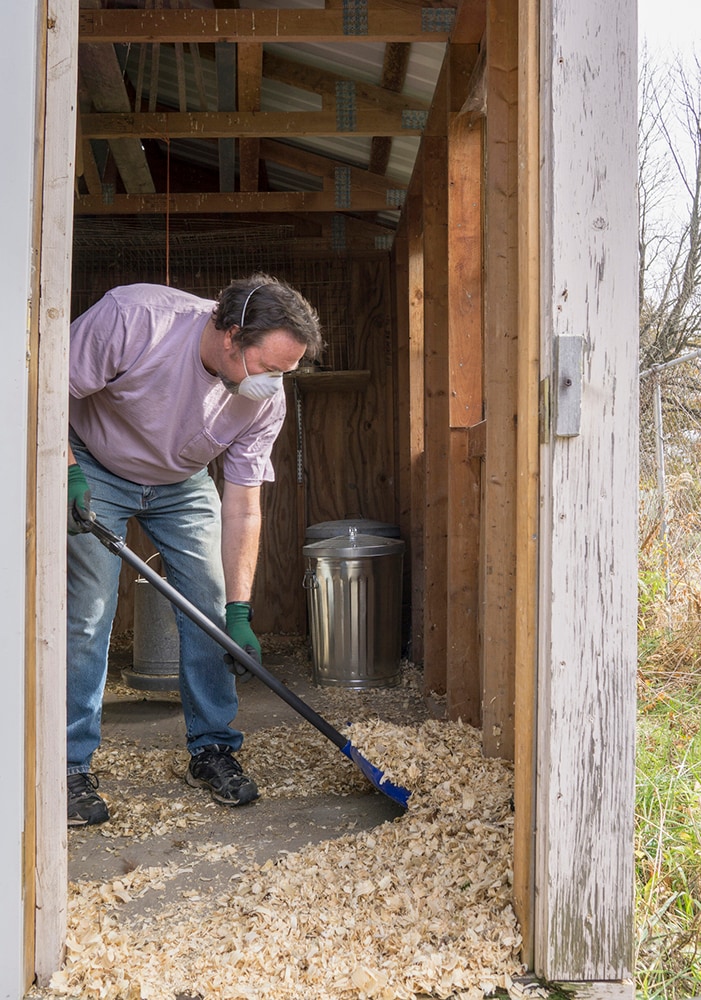
Protect yourself while caring for farm animals
Be aware that animals can still spread germs even if they look healthy and clean.
- If you keep or work with farm animals:
-
- Always wear protective equipment such as masks, gloves, and boots when cleaning animal stalls, assisting an animal in giving birth, or doing any activities that would involve touching bodily fluids from animals.
- Have dedicated shoes and gloves that you only use when working with your animals. Keep and store these items outside of your home.
- If you visit another farm, be sure to scrub your shoes and change your clothes before interacting with their animals and before coming back to your animals.
- Cover open wounds or cuts when visiting or working around farm animals.
Prevent bites and kicks
Germs can spread from bites and scratches, even if the wound does not seem deep or serious.
- Be cautious when around farm animals. Always be aware of your surroundings and know where animals and escape routes are at all times.
- Do not stand directly behind a farm animal or approach a farm animal from the rear, even when the animal stands in stocks or is restrained.
- Supervise children around farm animals so the child does not get injured.
- Teach children about safety around farm animals including keeping fingers away from the mouth and not approaching an animal from behind.
What to do if you are bitten, scratched, or kicked by a farm animal
Bites and scratches can become infected, even if the wound does not seem deep or serious. Being kicked by an animal can result in serious injury. If kicked by an animal, move away from the animal as quickly as possible and seek medical attention, especially if you were kicked in the head.
To prevent infection from bites and scratches:
- Wash wounds with soap and warm water immediately.
- Seek medical attention if:
- The animal appears sick or is acting unusual.
- The wound or injury is serious (uncontrolled bleeding, unable to move, extreme pain, muscle or bone is showing, or the bite is over a joint).
- The wound or site of injury becomes red, painful, warm, or swollen.
- It has been more than 5 years since your last tetanus shot.
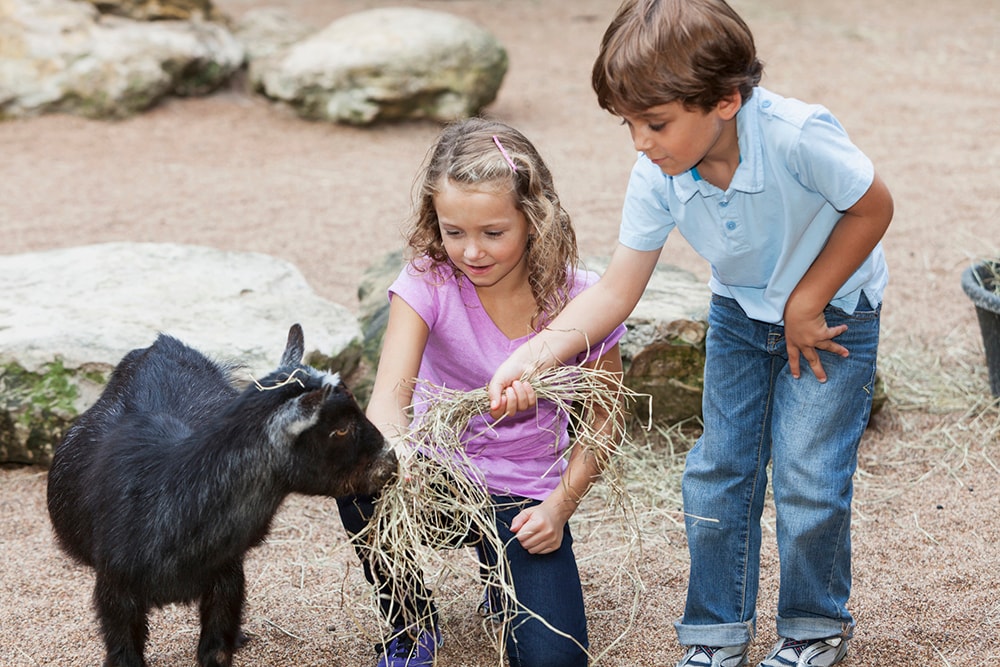
Stay healthy at petting zoos and animal exhibits
- Wash your hands thoroughly with soap and water immediately after touching farm animals or anything in the area where they live and roam.
- Avoid touching your mouth before washing your hands.
- Adults should supervise hand washing for young children.
- Use hand sanitizer if soap and water are not readily available.
- Wash hands after removing clothes and shoes.
- Supervise children when they are around farm animals:
- Prevent hand-to-mouth activities, such as nail biting, finger sucking, and eating dirt.
- Help children wash hands well with soap after interaction with any farm animal.
- Do not let children stand behind animals, grab their tails, or put their fingers near an animal’s mouth. This can lead to serious injury if the animal bites, scratches, or kicks.
- Do not let children 5 years of age or younger handle or touch chicks, ducklings, or live poultry.
- Do not bring baby or children’s items (for example, toys, pacifiers, spill-proof cups, baby bottles, strollers) into animal areas.
- Do not eat food or drink beverages in animal areas or where animals are allowed to roam. See more information on staying healthy at animal exhibits.
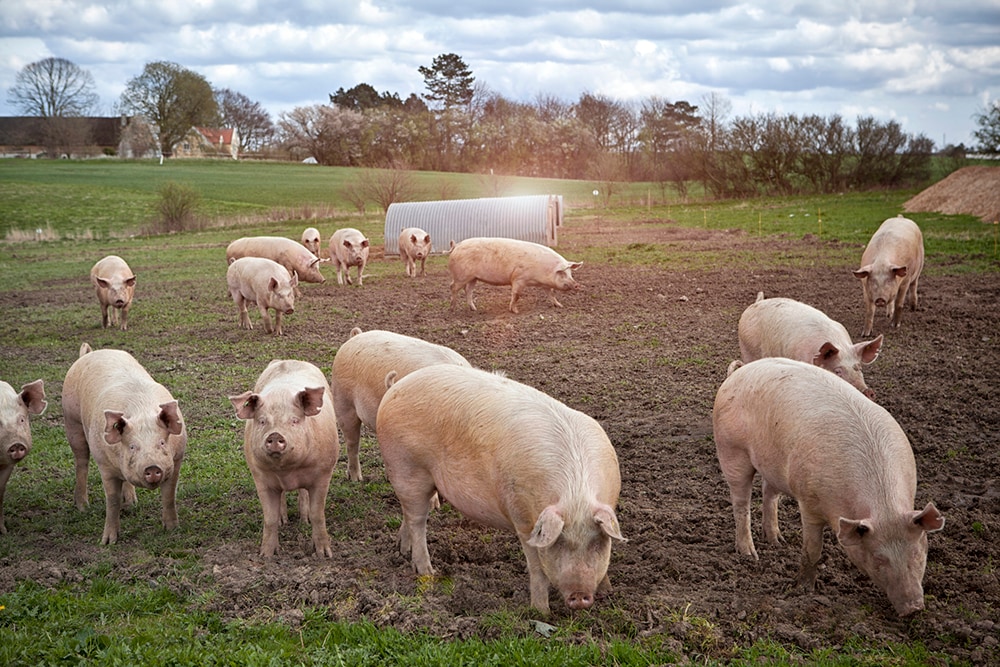
How to keep farm animals healthy
Keeping farm animals healthy helps to keep people healthy. To learn how to stay healthy around farm animals, visit the Healthy People section.
Keep farm animals safe and clean
- Keep farm animals in an appropriately-sized enclosed area at night to decrease their exposure to wild animals that could transmit rabies or other diseases.
- Use elevated feeders and store feed off the ground. This will help keep pests like mice and rats away.
- Properly dispose of soiled bedding and spoiled, expired, or uneaten food so it doesn’t make your animals sick.
- Clean farm animal enclosures and stalls frequently, and wear protective equipment while cleaning (for example, boots, gloves, and mask).
Monitor your animals’ health
- Make sure your livestock stay up-to-date on vaccinations. Talk to your veterinarian about what vaccinations they recommend for your animals. Several vaccinations are available for livestock, including for brucellosis, leptospirosis, and rabies.
- Schedule routine veterinary exams to keep your farm animals healthy and to prevent infectious diseases and internal and external parasites.
- Make sure any other animals living on the farm, including dogs and cats, receive routine veterinary care, flea and tick prevention, and vaccinations too.
- Contact your veterinarian if you notice any signs of illness in your animals. Keep in mind that even animals that look healthy can still sometimes spread germs to people and other animals.
Selecting and caring for farm animals
- Animal Health
USDA - Animal Safety Alert for Cyanobacteria Blooms [PDF – 2 pages]
- USDA Defend the Flock Program
- Farm Animal Emergency Preparedness (Blog)
Staying healthy around farm animals
Visit the Healthy People section for information about staying healthy around farm animals.
For People Who Own or Work with Farm Animals
- Got pigs? Got worms? [PDF – 1 page]
- Q fever fact sheet
- Healthy Families and Flocks
- Backyard Flocks and Salmonella [PDF – 1 page] (Poster)
- Stay healthy when working with farm animals [PDF – 1 page]
- Mycobacterium bovis (Bovine Tuberculosis) in Humans
- The Junior Disease Detectives: Operation Outbreak Graphic Novel
- Baby Chicks and Salmonella: Tyler’s Story
- Sick Kids, Dairy Calves, and Antibiotics that Don’t Work: Dr. Megin Nichols’s Story
For Visitors and Operators of Animal Exhibits
- Contact with Animals in Public Settings
- Wash Hands When Leaving Animal Exhibits [PDF – 1 page]
- 5 things to do right after visiting animals [PDF – 1 page]
- Stay healthy around animals [PDF – 1 page]
- Know how to be safe around animals [PDF – 1 page]
- Always wash your hands after handling live poultry – Sticker
- Spanish version – Sticker
- Influenza and Zoonoses Education among Youth in Agriculture Program – Resource Repository
Podcasts
- I Love Petting Zoos!
- Things You Can Do to Stay Away from the Flu
- Wash Your Hands If You Pet That Bunny
- Got Milk?
- Prion Disease: Learn the Facts. Avoid Exposure
- I Never Get the Flu
Guidance and Recommendations
- Compendium of Measures to Prevent Disease Associated with Animals in Public Settings, 2017
- Q fever safety at livestock birthing exhibits [PDF – 2 pages]
- Medscape: Illness Linked to Contact with Pets and Farm Animals
